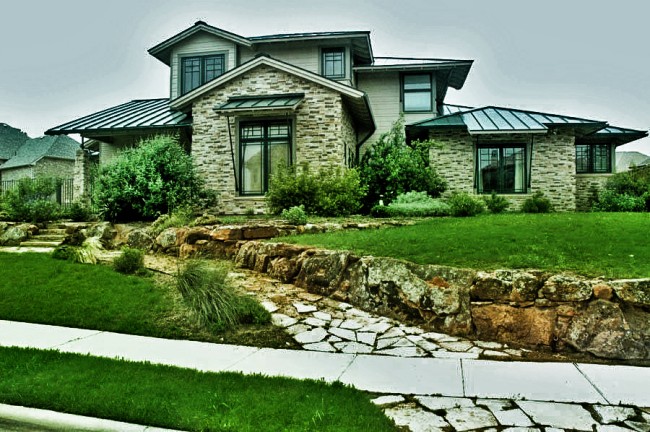
Abatement: Reducing or removing any kind of pollution.
Agricultural Bi-products: Products developed in agriculture but are not a primary product. This is often converted into building materials, such as straw used in wall panels or entire bales used as building blocks.
Agricultural Fibers: Natural fibers, such as cotton, often used as insulation materials.
Air Quality Standards: Amount of pollutants approved by predetermined guidelines that are not to be surpassed during a given time in a specific area.
Biodegradable: A material that is capable of decomposing naturally within a short amount of time.
Brownfields: Idle facilities where expansion or redevelopment is made difficult by environmental contamination.
Cellulose: A fibrous part of plants used to manufacture paper/textiles.
Cellulose Insulation: Insulation is made from recycled newspaper with borates to provide fire protection.
Certified Forest Product: A product certified as sustainable/suitable for use in a green building. These products are from a managed forest that has passed guidelines for responsible harvesting and environmental conservation.
Chain-of-custody Certification: A product that has met certain requirements throughout its life, beginning from its extraction and production all the way to its distribution and sale.
Chlorofluorocarbons: Chemicals used in refrigeration, air conditioning, insulation, or as solvents and aerosol propellants. CFC’s are not eliminated in the lower atmosphere, and therefore they float into the upper atmosphere where their components destroy the ozone layer.
Clean Energy: Energy created from renewable sources with low environmental impact.
Compact Fluorescent Lamps (CFLs): These lamps use much less energy than standard incandescent or fluorescent light bulbs.
Compost: An organic fertilizer made by a composting process wherein bacteria in the soil is mixed with degradable trash.
Cradle-to-Cradle: A procedure that advocates the recycling of waste materials into new products rather than permanently disposing of them.
Cradle-to-Grave: A procedure advocating the disposal of waste materials by means of landfill, incineration, etc. rather than recycling.
Daylighting: Using natural light in many different ways in a building. By using various design methods, this light decreases reliance on electricity by using windows and skylights.
Design for the Environment (DfE): An environmentally sensitive design model which reducing environmental damage through careful planning and material selection.
Domestic Hardwood: Deciduous trees whose wood is the only in the U.S. and where the growth of new trees exceeds the removal rate.
Dust Spot Efficiency: A measure of a filter’s collection efficiency for fine particles.
Earth Sheltered Design: A home designed to be built partially or completely below ground, either by digging into existing ground or by covering over parts of the house. This design utilizes the constant temperature of the soil to improve energy efficiency and reduces environmental impact.
Earth’s Thermal Energy: A little below the surface, the earth keeps a constant temperature close to the human comfort level, and this type of heating can be used efficiently for geothermal heating systems.
Embodied Energy: The energy that is necessary to make a product. It is also the molecular energy already existing in a product’s content.
Emission: The release of any gas or vapor into the environment from a particular source, including smokestacks, chimneys, and motor vehicles.
Energy Efficiency: Products or systems designed to use less energy for the same or higher performance. It can also save money on utilities by being less reliable on fossil fuels and depending more on renewable resources.
Energy Modeling: A computer model used to analyze a building’s energy systems in order to project its possible consumption rate.
Energy Recovery: A process of attaining energy from waste.
Energy Recovery Ventilator: A device that draws stale air away from a building and transfers the heat or coolness of that air to the outside air being pulled into the house, which also decreases energy costs along with reducing indoor pollutants.
Environmental Aspect: The way a manufacturer’s activities or products can relate positively or negatively with the environment.
Environmental Audit: An assessment of a company’s (or person’s) compliance with environmental requirements.
Environmental Impact: Any positive or negative change to the environment resulting from manufacturing processes.
EPA: U.S. Environmental Protection Agency: a governmental organization designed to set and enforce environmental regulations.
Fluorocarbon: A non-flammable liquid or gas used as propellants; often used in spray cans, they are classified as ozone-depleting substances.
Fly Ash: An ash residue created from combustion processes. Some electrical plants create a non-toxic fly ash that can be a substitute for Portland Cement.
Fossil Fuel: Fuel (such as coal, oil and natural gas) produced by the decomposition of fossilized plants and animals.
Formaldehyde: Colorless, pungent, toxic (the cause of many cancers or respiratory ailments) material used to as a component in glues for wood products.
Fuel Cell: A device used to convert energy into electrical power that is cleaner than most power sources.
Full Spectrum Lights: Lights that imitate the natural light spectrum and are therefore considered healthier.
Generator: A power plant producing electricity for a large number of people.
Geothermal Heat: A technology that utilizes the warmth from subsurface water to heat buildings, and it also extracts this heat to put back into the ground for cooling. Find more information on geothermal heating.
Global Warming: A significant variation from one climatic condition to another due to human activities.
Green Building: A building constructed to incorporate design techniques and materials, which then minimize its environmental impacts.
Green Electricity Provider: A utility that generates or invests in electricity from renewable sources and sells it for a small premium over standard electricity costs.
Green Power (see Renewable Energy):
Greenhouse Effect: The warming of the Earth’s atmosphere due to a buildup of gases in the air.
Greenhouse Gas: Any gas contributing to the greenhouse effect (carbon dioxide, methane, and nitrous oxide) by staying in the atmosphere and intensifying the sun’s heat as it radiates to the earth.
Greywater: Wastewater that doesn’t contain contaminates and can then be reused for irrigation after filtration.
Halocarbons: Manmade chemicals that, when released into the atmosphere as greenhouse gases, can disrupt global climate patterns. Their most common use is in refrigeration and air conditioning technologies.
Harvested Rainwater: Rain channeled by gutters to a storage unit and can then be reused for different things.
Heat Recovery Systems: Mechanical devices used to capture waste heat from another system to replace the heat that would otherwise come from a primary energy source.
High-performance Building: Similar to a green building, these structures specifically aim to be energy efficient, safe, and healthy.
High-quality Duct System: An alternative system in which all the ducts are sealed with fibrated latex material and fiberglass tape, and then run outside to avoid significant heating and cooling losses and potential health threats caused by de/pressurizing a house.
Hydropower (hydroelectricity): Clean energy technology that uses moving water to produce electricity. Water flows through a hydraulic turbine, which spins and then rotates generators and converts rotational energy into electricity.
Indigenous Materials: Building with materials that are produced in an area near to where the construction is taking place. This reduces building costs and helps to boost local economies.
Indoor Air Quality (IAQ): The amount of indoor pollution sources (paint, carpet, wood treatments, mold, etc) which can release different harmful gases (such as carbon monoxide) and can cause health hazards if the air isn’t properly ventilated.
Integrated Pest Management: A cost-effective way to prevent pests by using less invasive techniques to both animal and occupant alike.
Ready to start your green building project?
Find ProsLead: A toxic pollutant, typically found in older homes, that is a component of lead-based paint.
Life Cycle Assessment: Analyzing a product’s entire life from raw materials through manufacture, use, and disposal.
Low Biocide: Paint that does not contain toxic additives, such as fungicide or pesticide.
Low-E Windows: Low emissivity windows that reflect heat, not light, thereby keeping spaces warmer in winter and cooler in summer.
Low-flow toilet: A toilet that uses less water than a traditional unit, therefore lowering costs by using water more efficiently.
Low-pressure Drop Air Filters: High efficiency air filters with an extended surface, which allows for more filtration without an increase in horsepower.
NIOSH: National Institute for Occupational Safety and Health: a federal agency that conducts research in order to prevent work-related injury and illness.
Outgas: Emission of fumes into the air; these emissions are often caused by building materials that contain certain chemicals.
Passive Design: Building design that uses natural processes such as radiation, convection, absorption, and conduction as support.
Passive Cooling/Heating: A building structure designed to increase ventilation and retention of heating/cooling within its building components.
Pervious Paving: Material that allows water to penetrate to the soil below, thereby decreasing the amount of water needed by the water system.
Passive Solar Design: Using design methods to capitalize on heat and light from the sun, thereby reducing the need for electric systems.
Post-Consumer Recycled (PCR) Content: Materials that have been recovered after use.
Radon: A radioactive gas that occurs naturally, but when trapped in buildings can cause health problems such as lung cancer.
Recyclable Content: Materials that have potential to be recovered from recycling.
Recycled Content: Percentage of recycled materials in a product.
Renewable Energy: Energy resulting from natural sources; they can then replenish themselves over short periods of time (sun, wind, moving water, organic plant, biomass, geothermal heat).
Sink: Gases and vapors absorbed onto surfaces such as carpet, drywall, etc, and can later be re-emitted.
Site Preservation: Minimizing the disruption of a building on its surrounding environment (reusing existing structures on a site, rather than building upon unused land; or avoiding building on top of environmentally fragile land that could interfere with natural ecosystems).
Smart House: Electronic controls and sensors that regulate heating, cooling, ventilation, lighting, and appliance operation for energy conservation purposes. Do you want a smart home?
Solar Water Heater: Heat from the sun that is absorbed and then transferred by pumps to a storage unit, which is then transported to the hot water of a home through a heat exchanger.
Solar Photovoltaics (PV): These convert sunlight directly into electricity by using materials made from semiconductor materials. This material does not create any pollution, noise, or other environmental impact.
Technical Nutrient: A material designed to return into the technical cycle.
Thermal Bridge: A conductive element, such as a metal channel, that bypasses a less conductive element, such as insulation.
Thermal Buffer: A gap between a space and its exterior used to reduce the heating/cooling load.
Thermal By-pass: An opening between spaces that air can move through, thereby violating air tightness.
Thermal Envelope: The shell of a structure that creates a barrier from the elements.
Thermal Flywheel: A space that collects heat then releases it in a continuous pattern.
Tight Construction: The elimination of gaps and holes in a building’s exterior through proper air sealing and ventilation. It reduces waste and makes a home more energy efficient.
Toxic: Any material or waste product, which can cause injury if inhaled, swallowed, or absorbed through the skin.
U.S. Green Building Council (USGBC): A national organization whose mission is to accelerate the adoption of green building practices, technologies, and standards.
Urban Heat Islands: Dark-colored surfaces absorb heat from the sun more than light-colored surfaces. In urban areas, a combination of dark surfaces and a lack of shade intensify this effect. One solution is the use of lighter-colored materials in building construction. The use of well-placed vegetation to increase shade or green roof systems can also minimize these effects and increase energy efficiency.
Volatile Organic Compounds (VOCs): Materials that evaporate from organic products and can cause acute and chronic illnesses.
Waste-to-Energy: Incinerating waste products in order to generate steam, heat, or electricity.
Water Efficiency: Products, such as low-flow water fixtures, that use less water than traditional products, while still sustaining the same performance.
Whole-building Design: The integration of a building’s systems to maximize environmental and financial functioning by considering energy systems, building materials, design methods, site preservation, and indoor air quality so that a structure can run at its maximum efficiency.
Wind Turbine: A mechanical system that “captures” wind to generate electrical power. Surplus electricity is then stored in a battery storage system for future use, or power is restored back into the utility, thereby lowering usage rates.
Xerioscope: A new landscaping design that accounts for water and energy efficiency yet requires less maintenance by exemplifying good planning, efficient irrigation processes, soil improvement, easily foliage conservation, and good maintenance.
 Fix-It 101: The Fix-It Literacy Guide
Fix-It 101: The Fix-It Literacy Guide 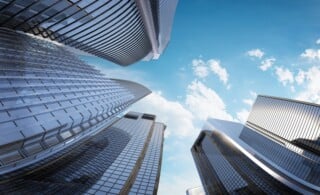 Engineering the Future: The Educator’s Guide to Building and Construction
Engineering the Future: The Educator’s Guide to Building and Construction 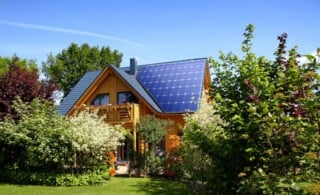 Sustainable Home Improvements that Help Save the Planet
Sustainable Home Improvements that Help Save the Planet 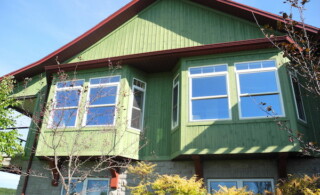 Going Green in Your Home
Going Green in Your Home 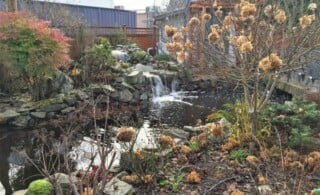 Water Conservation Throughout the Home
Water Conservation Throughout the Home 

Are You Familiar With This Topic? Share Your Experience.